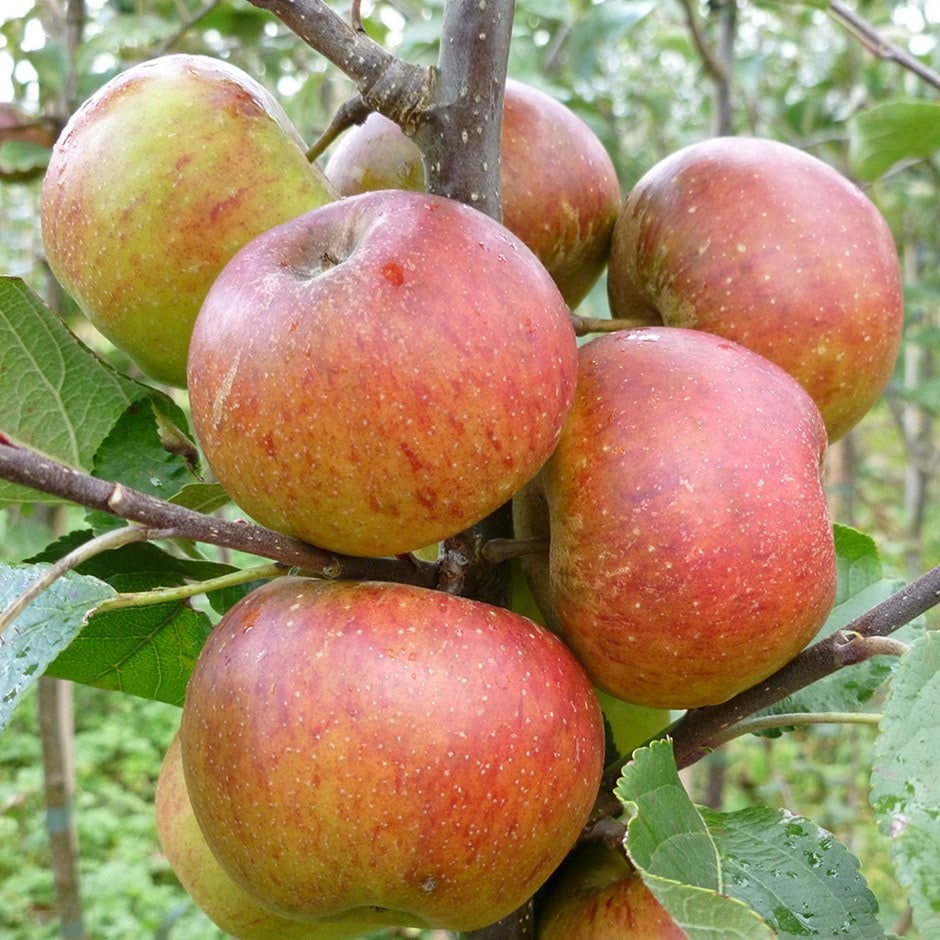apple 'Chivers' Delight'
eating / dessert apple
This plant is deciduous so it will lose all its leaves in autumn, then fresh new foliage appears again each spring.
- Position: full sun
- Soil: moderately fertile, moist but well-drained soil
- Rate of growth: average
- Flowering period: April and May
- Hardiness: fully hardy
A late-season dessert apple with crisp, juicy flesh and a sweet, well-balanced flavour. This variety produces a good crop of red-flushed, yellow fruit, ready for picking in mid-autumn and storing until mid-winter. Resembling 'Braeburn' in taste and texture, 'Chivers Delight' boasts a golden, slightly waxy skin, allowing it to be stored well until January in a cool, dry place. Additionally, the tree showcases charming pinkish-white blossoms and vibrant green leaves in spring, making it an excellent choice for gardens across all regions.
Pollination information: This variety is self-sterile so will require a pollination partner from group 3 or 4 such as ‘Discovery’ or 'Gala’ to produce fruit.
Pollination information: This variety is self-sterile so will require a pollination partner from group 3 or 4 such as ‘Discovery’ or 'Gala’ to produce fruit.
When planting your apple tree, prepare a hole up to three times the diameter of its root system. Fork over the base of the pit in readiness, incorporating plenty of organic matter into the backfill and planting hole. Avoiding frozen and waterlogged soil, trees should be planted out as they arrive. If you've ordered a bare root tree, soak the roots in a bucket of water for half an hour prior to planting - or if this is not possible, they can be heeled in temporarily, covering their roots with soil, or potted up. Once in the ground, stake firmly and keep the base weed-free. Apply a balanced fertiliser in early spring to support growth and fruiting and provide regular watering during hot, dry spells. The main winter prune, avoiding frosty conditions, involves removing dead, dying, and diseased wood to create an open crown. Additionally, reduce leaders and laterals by a third to establish an airy structure without crisscrossing branches. In August, summer prune by shortening side shoots longer than 20cm (8”) back to three leaves, promoting fruit ripening and encouraging more fruit buds.

